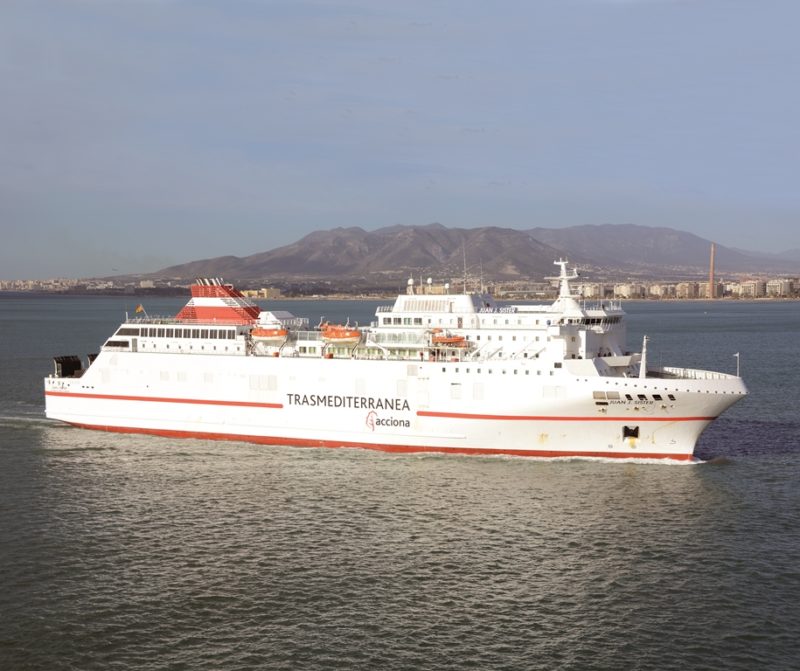
Trasmediterranea of Spain has been serving the islands of Spain for over a century, with three of their fleet that served the Canary Islands actually having the word ‘Sister’ in their names over this long period. This trio of passenger ferries had the names of J. J. Sister built in 1896 as Galileo Galilei and purchased and renamed in 1910, J. J. Sister (2) of 1975, and Juan J. Sister of 1993.
The first J. J. Sister was sold for breaking up at Valencia in June 1964 by Aguilar y Peris, and the second J. J. Sister was sold to Moby Lines of Italy in 1997 and renamed Moby Magic and was sold for breaking up in December 2005 at Aliaga in Turkey, while Juan J. Sister was completed as the flagship of the fleet in 1993 and is still in service for Trasmediterranea. All of this trio were named after Juan Jose Sister, a founder of the Valenciana ferry company that became a constituent member of Trasmediterranea in 1917. Juan Jose Sister had been born in Villanueva del Grao in 1828, and in his youth was a fisherman and later a pilot and shipowner and he died in January 1885.
‘La Tras’ is the colloquial name that Spanish people use for their much loved national ferry line. New Year’s Day of 2017 was the centenary anniversary of the first day that their Spanish national ferry line began to run services to its many destinations including the Balearics, Ceuta and Melilla in North Africa, the Canaries, and the Spanish colonies of Fernando Po and Spanish Guinea in West Africa. Nine small companies came together on that day one hundred years ago, namely Maritima Barcelona, Gijonesa, La Islena Maritima, Menorquina, Navegaceon y Industria, Tintore (founded by Pablo M. Tintore in Barcelona in 1852), Valenciana and Vinuesa fleets.
The actual instrument and deed of the constitution of Compania Trasmediterranea was signed in Barcelona before the Public Notary Antonio Sasot Mejias on 25th November 1916 by Joaquin Maria Tintore of Linea de Vapores Tintore, Enrique Garcia Corrons of Navegaceon y Industria S.A., Jose Juan Domine of Compania Valenciana de Vapores Correos de Africa, and Vicente Ferrer Pesset on behalf of Ferrer Pesset Hermanos companies.
The new company had a large fleet of 44 passenger and cargo ships to call on, mostly small steamers, but the first task was to analyse how these disparate fleets would fit into a national plan. A network of mail, passenger and cargo services was worked out that linked all of the coastal islands and the enclaves of Ceuta and Melilla in Northern Africa, but also the long range services to the seven Canary Islands and the two possessions in the Gulf of Guinea at a great distance from Spain.
1.J. SISTER OF 1896
A fine trio of twin screw, twin masted Italian built sisters, dating from 1896 as Cristoforo Colombo, Galileo Galilei and Marco Polo, were purchased in 1910 for ten million pesetas from Navigazione Generale Italiana (NGI) of Italy and registered in Valencia by La Roda Hermanos and transferred to Valenciana in 1914, and given the names A. Lazaro, J. J. Sister and V. Puchol after the founders of the Valenciana company. They had black funnels with a central white band under NGI, and under Spanish ownership were given black funnels with a central ‘C’ and ‘A’ superimposed in white. They had dimensions of length 281.7 feet, moulded beam of 36.7 feet and depth of 19.8 feet with a loaded draft of 15.0 feet, together with a fo’c’stle of 36.0 feet in length and poop of 46.0 feet in length. They had originally been fitted with twin triple expansion steam engines of cylinder diameter 585, 940 and 1,520 mm with a stroke of 950 mm and taking steam from two boilers, and were twin screw. The trio had been built by the Odero yard at Sestri Ponente near Genoa, and there was actually a fourth sister owned by NGI and registered in Palermo, Ignazio Florio, from the Orlando yard at Livorno, which was sold in 1897 to the Romanian Government and broken up in 1938.
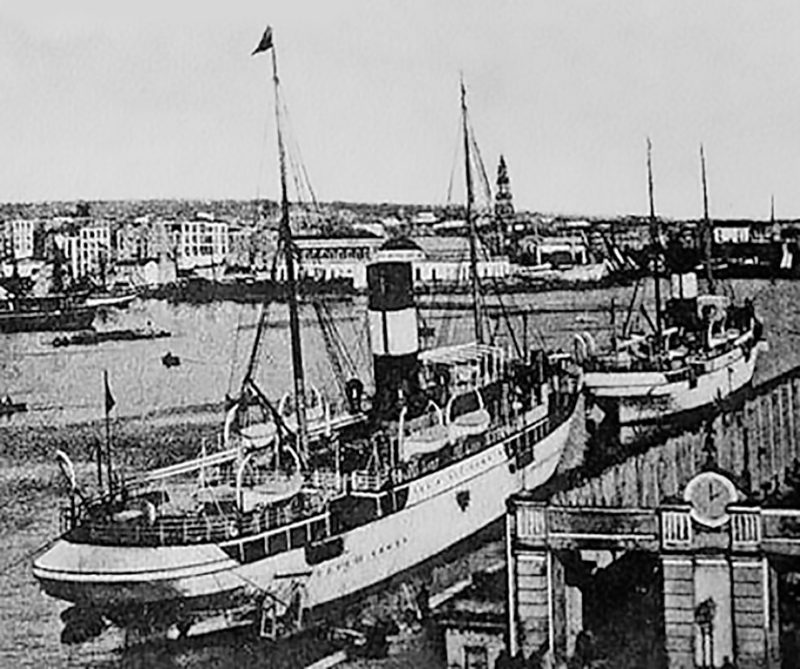

The Promenade Deck of J. J. Sister was equipped with cane easy chairs to port and starboard for sunbathing or taking the air, while her elegant First Class Dining Room had fabric covered carver chairs for diners of small groups at tables, while the Second Class Dining Room had longer tables for diners and smaller chairs. The trio had been frequently used by the Valenciana company from Malaga to Ceuta and Melilla and had accommodation for sixty First Class passengers, some in Second Class, and 350 deck passengers and just over one thousand tonnes of cargo, mostly potatoes.
On one of these voyages, J. J. Sister commanded by Capt. Pedro Tonda, went to the aid of the damaged Italian steamer Adda after receiving distress calls and towed Adda to port after a 15 hour battle in high seas. Capt. Pedro Tonda received a Plaque of Honour, the Merit of the Red Cross, and a Shipwrecked Salvage Medal for his valiant efforts.
The priority was to modernise this elderly fleet, and this was achieved initially by re-engining old ships with ten cylinder M.A.N. diesels manufactured at Augsburg of four stroke single acting design to give a service speed of 12 knots from twin propellers from 1922 onwards, including the important Valenciana trio dating from 1896. J. J. Sister received her twin engines while sitting in the floating dock of the Fijenoord Dockyard at Rotterdam in early April 1924.
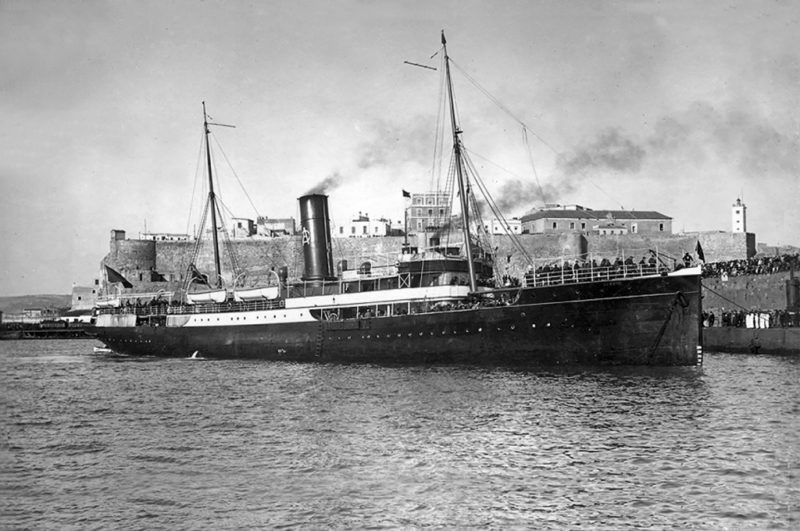
- J. Sister was of 1,527 grt and 734 net tonnage, and had two decks for loading her cargoes of Canarian potatoes and tomatoes on her Trasmediterranea service. The cabins were lit by electric light and her navigation bridge was fitted with Marconi wireless. She was registered at Valencia and her white hull and yellow funnel with a central red band were repainted during refits and special surveys at Valencia. She ran on ten hour voyages from Valencia to Barcelona in winter on Wednesday and Saturday, returning from Barcelona on Mondays and Thursdays, and with an increased service in summer of Tuesdays, Thursdays and Saturdays from Valencia returning on Mondays, Wednesdays and Fridays from the Atarazanas quay near the tall column of Christoforo Columbus in Barcelona.
On 24th April 1924, J. J. Sister, now with new diesel engines, replaced the steamer Mallorca while she was under repair on the Barcelona to Palma de Mallorca route. On 6th June 1924, she sailed from Valencia with a large number of guests onboard to receive the Italian ship Dante Aligieri at sea with the King of Italy onboard before he arrived in Valencia. Later that month, she made her first voyage to the Canary Islands from Seville and Cadiz, and arrived on 15th June 1924 for the first time in the grand harbour of Santa Cruz de Tenerife before moving on to Las Palmas de Gran Canaria and Santa Cruz de la Palma, the ‘green’ island of the archipelago.
On 2nd June 1927, J. J. Sister sailed from Valencia to Sagunto with the entourage of King Alfonso XIII onboard on the occasion of the inauguration of the Monument to the Restoration. On 1st September 1929, she made a recreational cruise from Barcelona to San Feliu de Guixois and S’ Agaro with 402 cruise passengers arranged by Viages Blaus. On 15th October 1929, she had numerous guests onboard on the occasion of the naval manoeuvres of the Spanish Squadron in the Gulf of Valencia, and witnessed by King Alfonso XIII, Prime Minister Miguel Primo de Rivera, the Minister for the Navy and his staff onboard the larger motorship Infanta Cristina, renamed Ciudad de Cadiz in 1931. She then returned to the Valencia to Barcelona route until the new motorships Ciudad de Alicante and Ciudad de Valencia of 2,434 grt were delivered in 1930 for this route, and she then transferred to the Malaga to Melilla route.
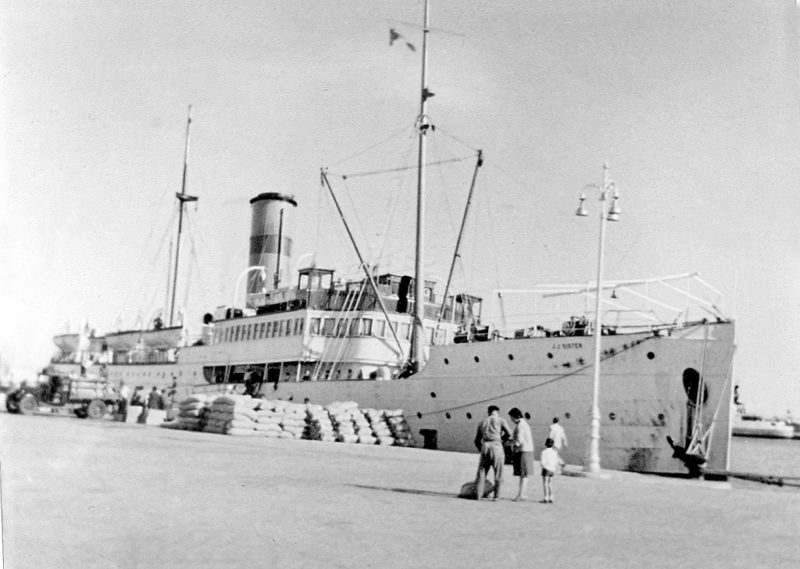
Sign-up today to read the full article!
Simply click below to sign-up and read the full article, as well as many others, instantly!

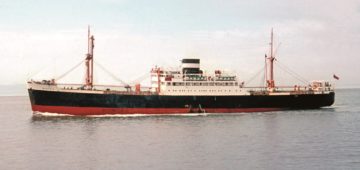




Comments
Sorry, comments are closed for this item